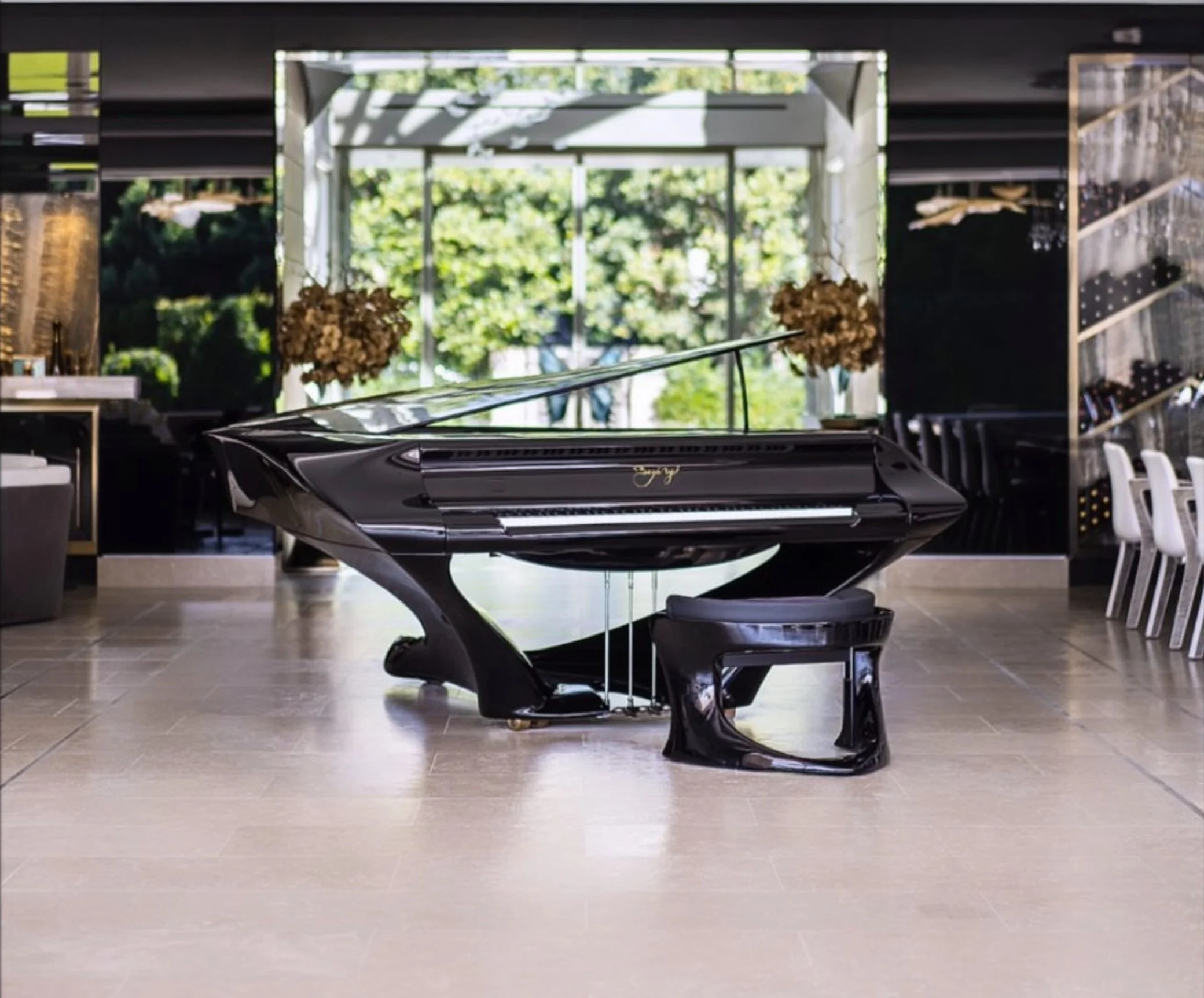
The musical inspiration of the Aria Hotel Budapest - inside one of the world’s and Hungary’s top luxury hotels
Bogányi piano inside the musically inspired boutique luxury Aria Hotel, in downtown Budapest. One of the world’s and Hungary’s top luxury hotels. Visit and experience the Bogányi piano in the unique glass ceiling of the Music Courtyard.

A bespoke bronze beauty on the award-winning Aviva superyacht
This interpretation of a grand piano, designed by musician Gergeley Boganyi, produces incredible sound. Painted a custom color expressly for Aviva, it sits in the upper deck salon and is as much a piece of art as a musical instrument.

Aboard the Kismet - 2025’s Motor Yacht of the Year
It’s an honour to be chosen by the owner Shahid Khan, Shanna Khan, Reymond Langton Design and Lürssen builders. The Bogányi piano revels in the ultra-luxury interior design where its free-flowing curves, dynamic posture, fit as a centrepiece, a sculpture of sound within the majestic inspiration.

Gracing the Papillon in Beverly Hills - Named Best Architecture Single Residence at the 2024-2025 International Property Awards
A virtuoso result in the majestic Papillon residence in Beverly Hills. Named Best Architecture Single Residence at the 2024-2025 International Property Awards.
